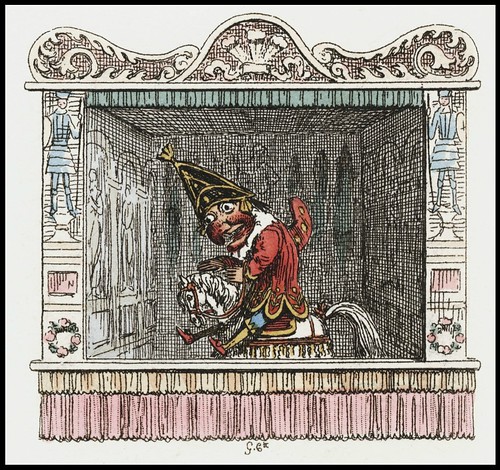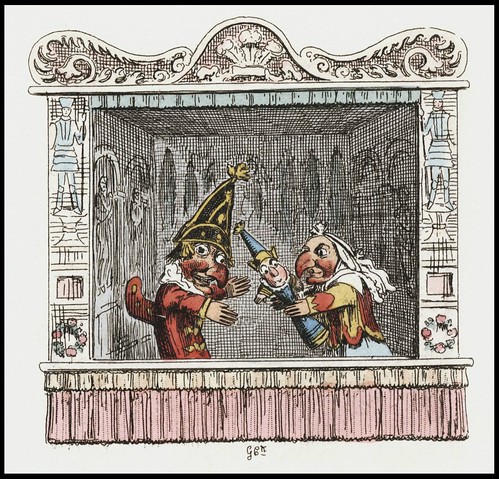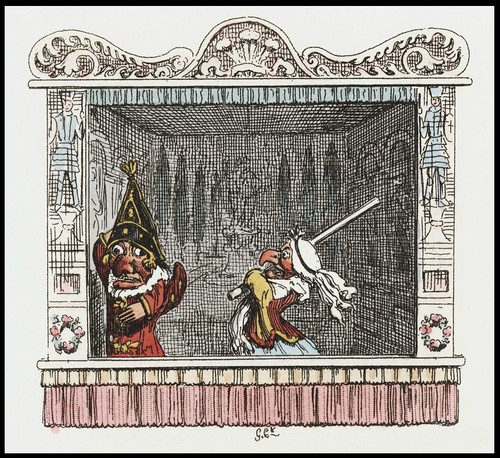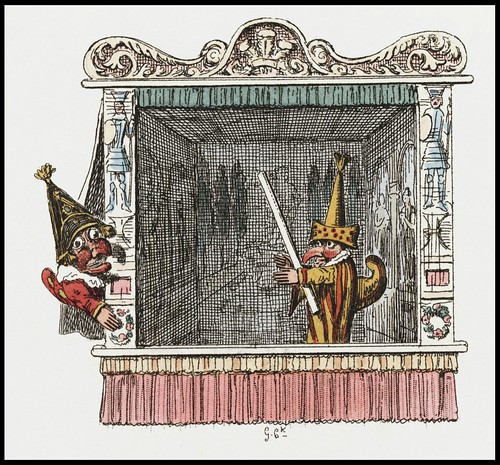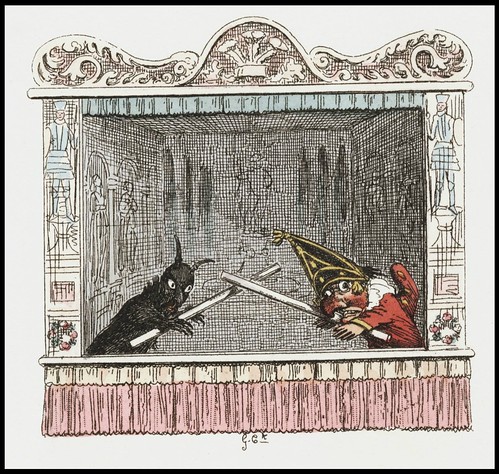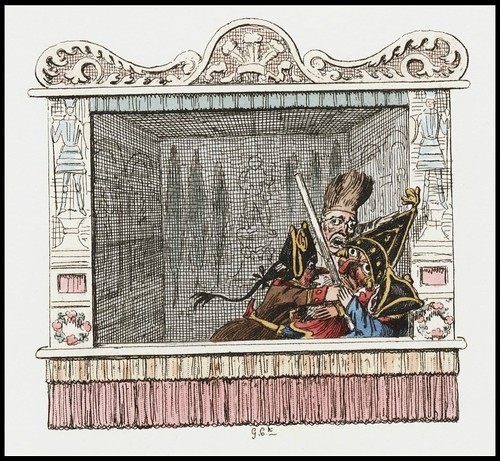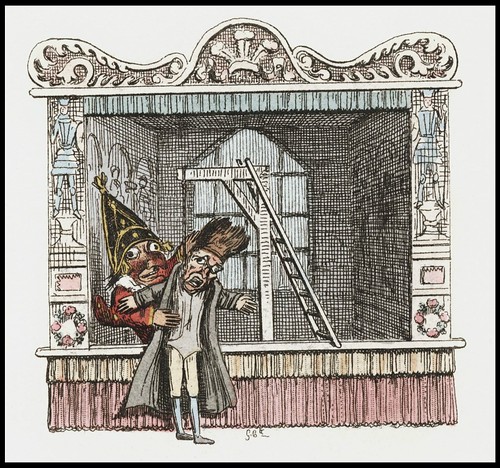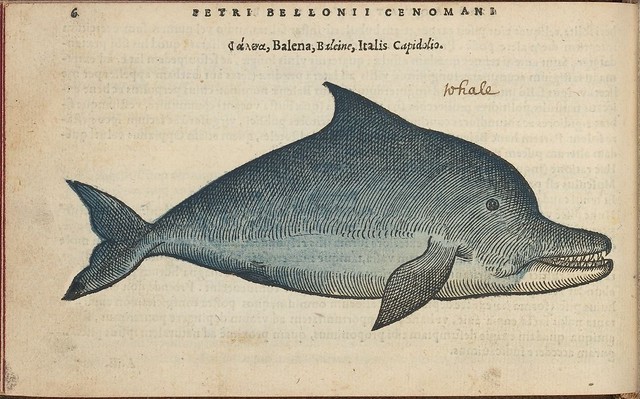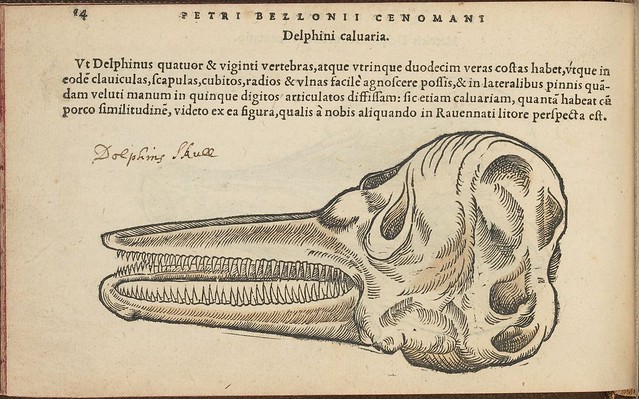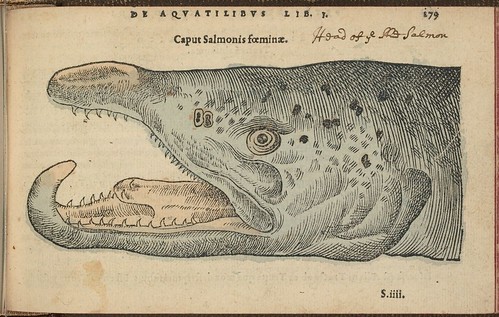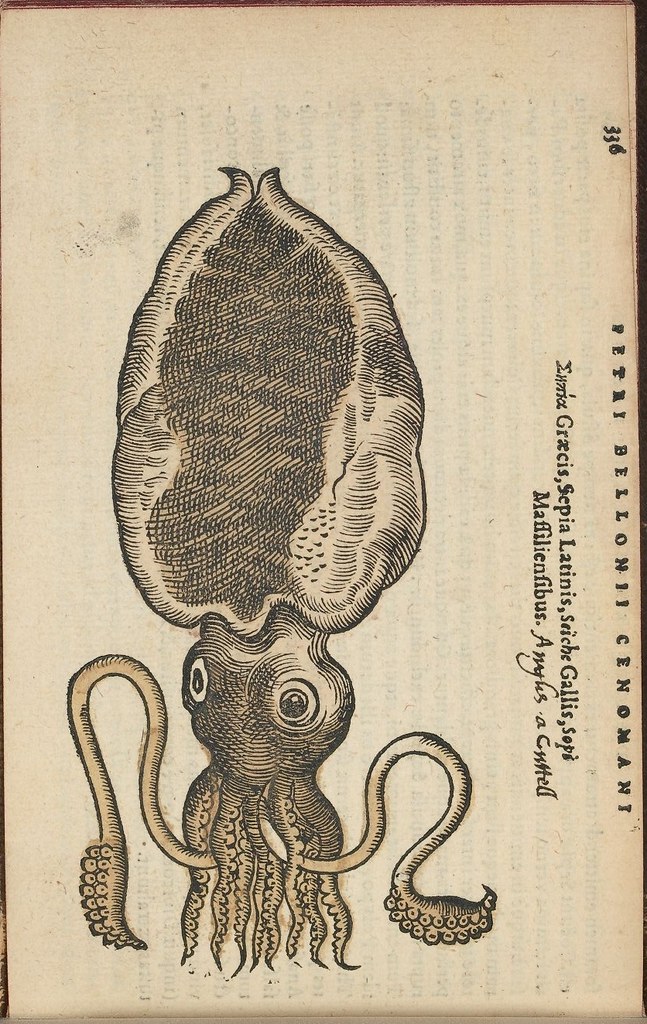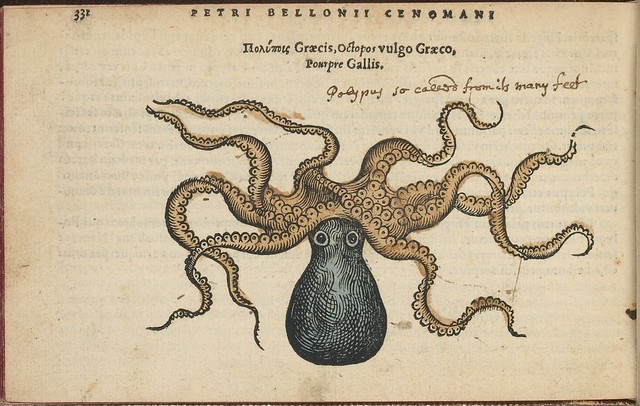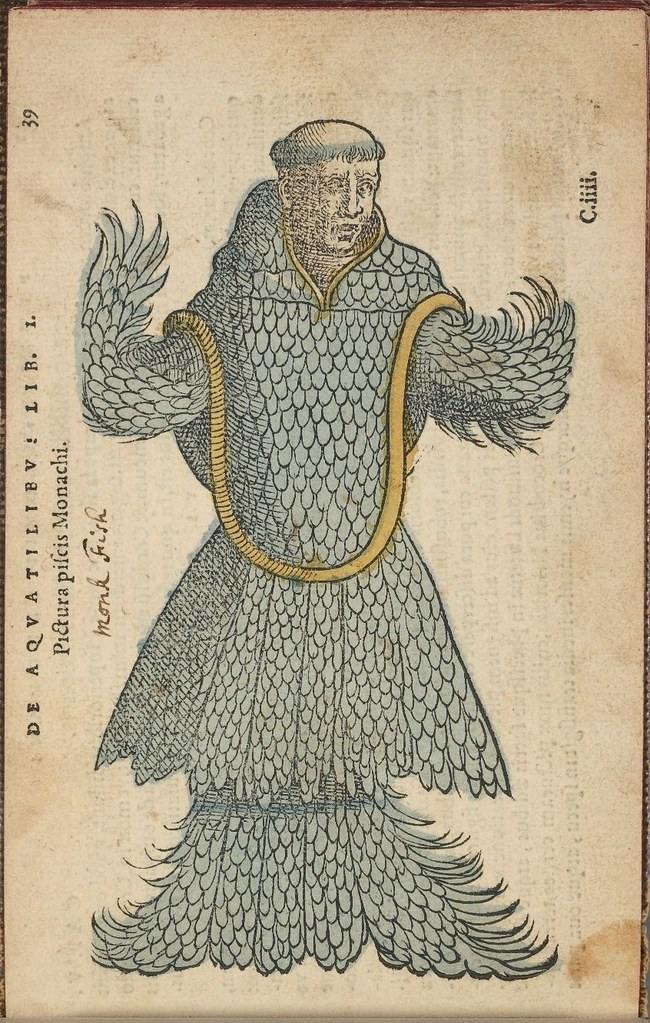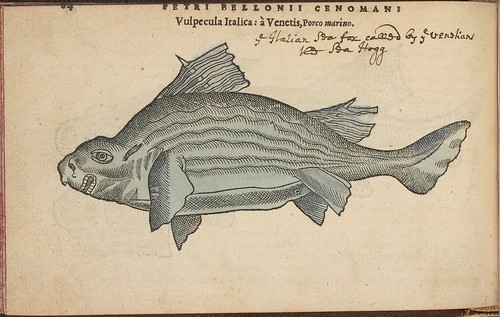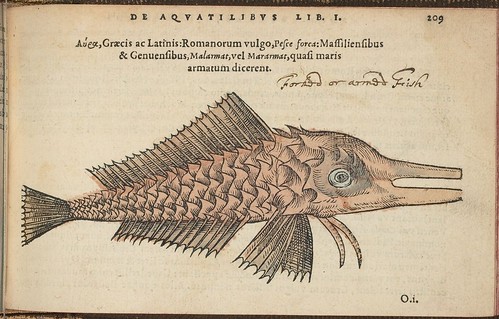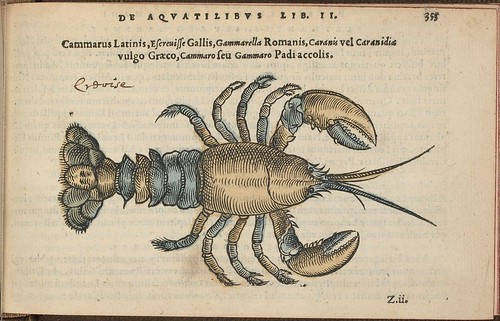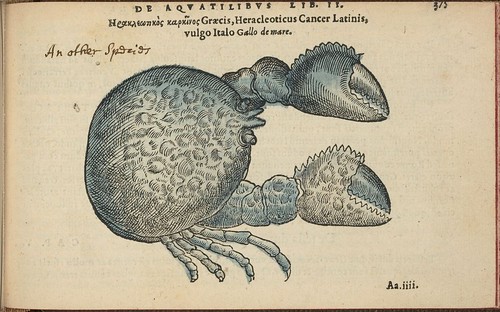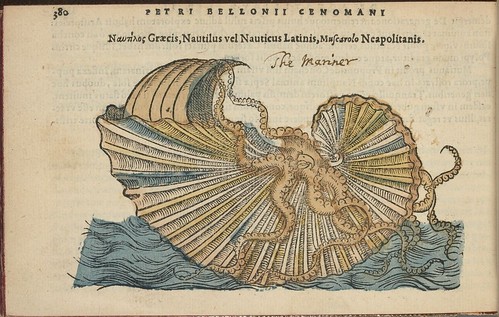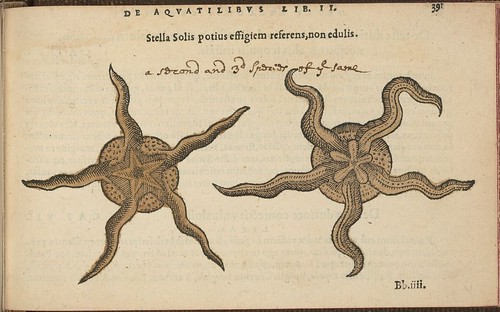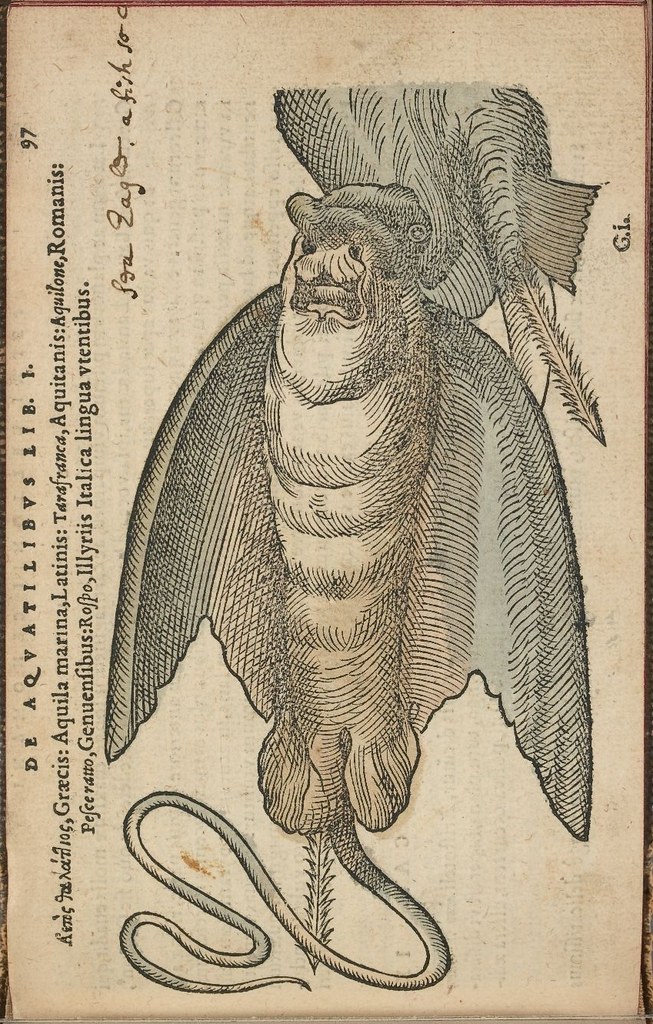Particular points of interest about this rather extraordinary manuscript :::::
- It was (anonymously) produced by the Dieppe school (France) in 1547 and was either copied from Portuguese maps or was completed with the input of (a) Portuguese cartographer(s)
- The maps are known as portolan (navigational) charts [previously]
- Unusually, north is shown at the bottom of the maps in the style of Muslim cartographers (very rare in European Christian mapping)
- Allegedly, this atlas shows the first ever European record of Australian coastline -- some 250 years ahead of Capt. Cook and 60-odd years before the earliest official European discovery/sighting/mapping of any Australian coastline by William Janszoon in 1606 [see: Landing List].
- The miniatures and marginalia depict 16th century native and colonisation scenes
- The first[?] use of the name "Canada" in a map [also]
[Click through to large and VERY large versions of these images]
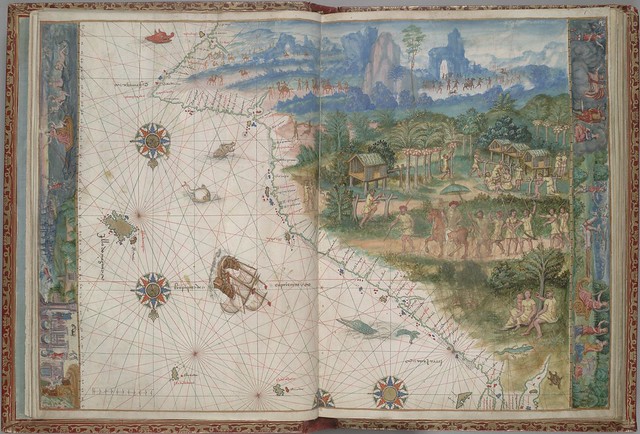
'Terra Java' (east coast of Australia?)
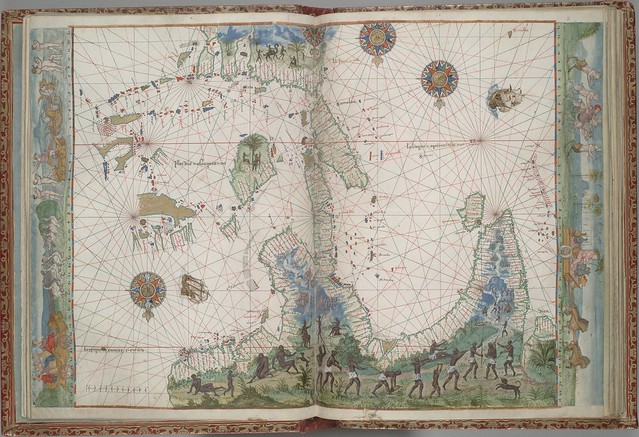
'La Java' (north coast of Australia?) East Indies, part of Asia
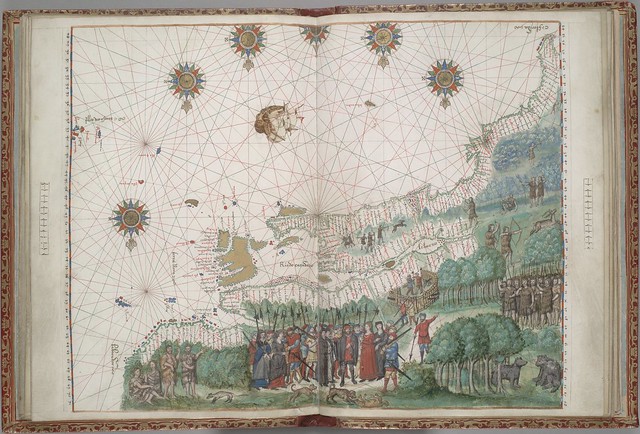
North America, East Coast

South-Eastern South America, Straits of Magellan
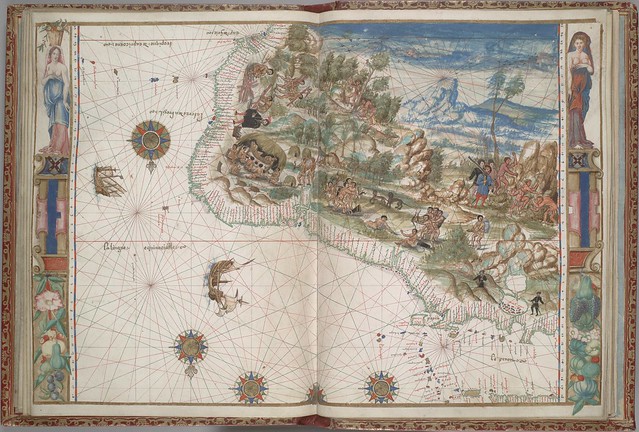
North-Eastern South America
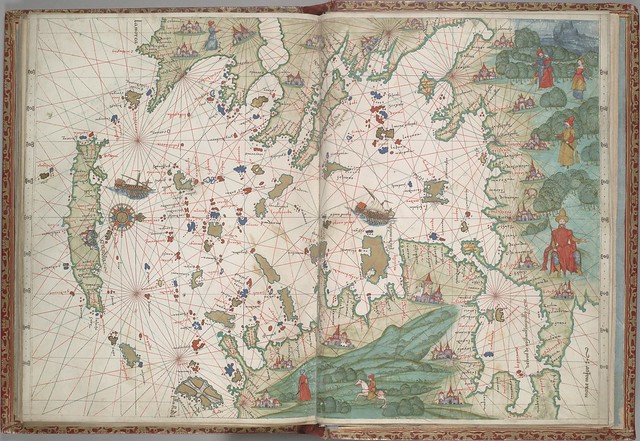
Aegean Sea
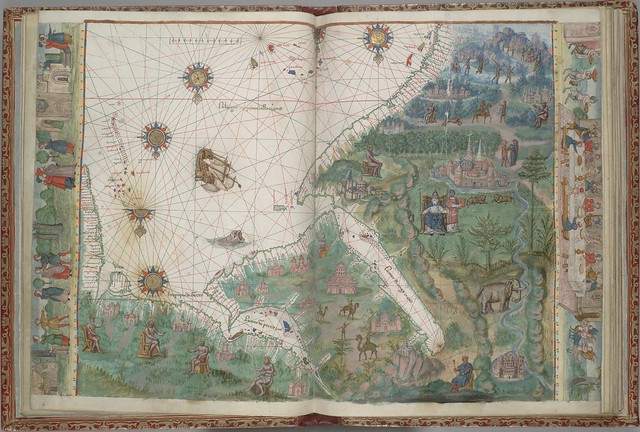
Arabian Sea, Red Sea, and Persian Gulf

Western Europe and North-Western Africa

Europe and Northern AfricaWest Indies, Mexico, Central America, northern South America
(correct identification - which is in the
guide - was pointed out by a commenter)
To be honest, the attraction of this atlas, for me, rests with its unique aesthetic properties rather than in the folkloric dimension it *may* play in the mapping history of the Australian coastline (I don't think the evidence is conclusively persuasive) . If anything, I'm a bit miffed that I didn't grow up speaking Portuguese, which seems far beyond my meagre linguistic talents these days.
VIA "The Vallard Atlas is a magnificent portolan atlas, one of the bibliographic treasures of sixteenth century Europe. One of its most noteworthy characteristics is the miniatures depicting countless illustrations of the daily life of the native population in every territory. The Vallard Atlas, whilst ascribed to the Dieppe cartography school, has a clearly Portuguese flavour due to either its anonymous creator or the model that inspired it."
